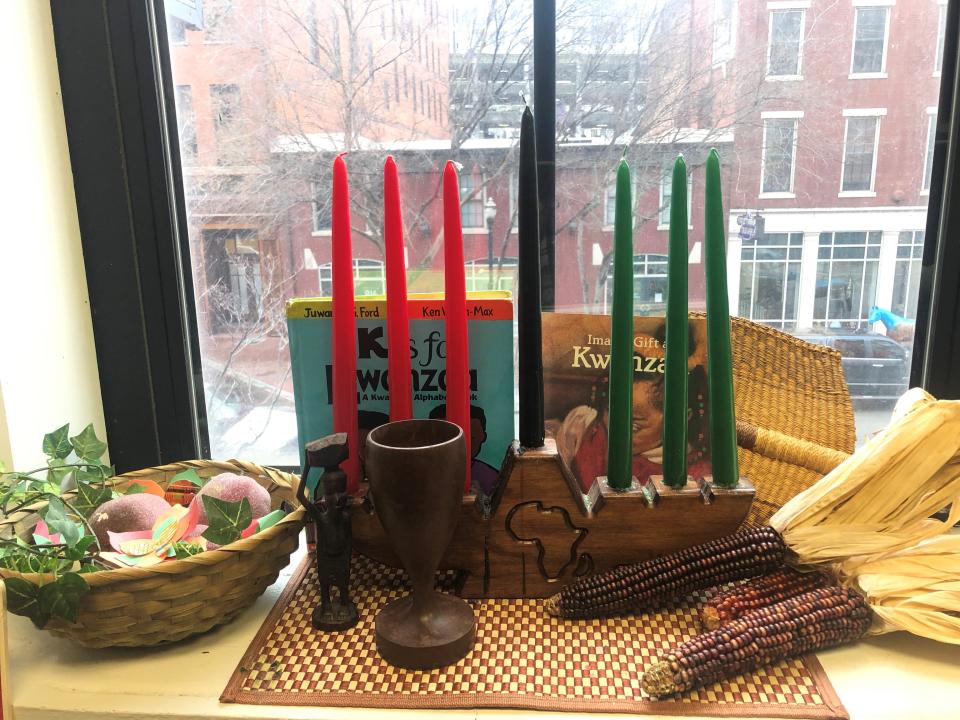What is Kwanzaa and who celebrates it? Everything you need to know about the holiday
Nestled between Christmas and New Year's Day is the week-long holiday that celebrates African American heritage and culture known as Kwanzaa.
The seven-day celebration is a relatively modern holiday that was first celebrated in the 1960s. Each day of Kwanzaa is devoted to celebrating the seven basic values of African culture or the "Nguzo Saba," which in Swahili means the seven principles.
For those who celebrate Kwanzaa, it is a time for families and communities to come together to share a feast, honor their ancestors, and celebrate African and African American culture.
Here's everything you need to know about Kwanzaa.
What is Kwanzaa?

Kwanzaa is a seven-day festival held annually from Dec. 26 to Jan. 1 that celebrates African and African American culture and history.
It was created by Maulana Karenga, an African-American professor of Africana studies at California State University in 1966. Karenga wanted a way to bring African Americans together to remember Black culture.
The name Kwanzaa comes from the phrase matunda ya kwanza, which means "first fruits" in Swahili, an Eastern African language spoken in countries including Kenya, Uganda, Tanzania, Mozambique and Zimbabwe.
Karenga chose Swahili to name the tradition because it is the most widely spoken language for people celebrating pan-Africanism, the concept of Black people all over the world feeling a sense of unity and striving to restore the African continent and themselves against racism and oppression.
Karenga researched African harvest celebrations and combined aspects of several different celebrations, such as those of the Ashanti and those of the Zulu, to form the foundation of Kwanzaa. It's based on the practice of people coming together to celebrate and give thanks for the good things in their lives and communities, the Courier Journal previously reported.
What is the Kinara?

The kinara holds seven candles, the Mishumaa Saba, which is three red candles on the left, and three green on the right with a black candle in the center that represents the African flag.
Each night during Kwanzaa, a candle is lit, similar to Hanukkah. The Black candle is lit first and then it alternates between the red and green candles starting with the ones on the outside and moving inward.
Kwanzaa celebrations often include singing and dancing, storytelling, poetry reading, African drumming, and feasting. Even though the official celebration is seven days long, the guiding principles are meant to be incorporated into daily life. The weeklong period is meant to reinforce the seven guiding principles of Nguzo Saba.
What is Nguzo Saba in Kwanzaa?

Kwanzaa teaches seven principles, honored and celebrated on each day of the holiday:
Day 1 Umoja (Unity): Unity of the family, community, nation and race
Day 2 Kujichagulia (Self-Determination): Being responsible for your own conduct and behavior
Day 3 Ujima (Collective work and responsibility): Working to help one another and the community
Day 4 Ujamaa (Cooperative economics): Working to build shops and businesses. Many who celebrate Kwanzaa will actively shop from Black businesses
Day 5 Nia (Purpose): Remembering and restoring African and African American cultures, customs and history
Day 6 Kuumba (Creativity): To do always as much as we can, in the way we can, to leave our community more beautiful and beneficial than we inherited it
Day 7 Imani (Faith): Believing in people, families, leaders, teachers and the righteousness of the African American struggle.
What are other Kwanzaa symbols?

Kwanzaa is often associated with corn and other crops. Here are what the other symbols of Kwanza mean:
Mkeka: A woven mat made of fabric, raffia or paper. The other symbols are placed on the Mkeka. It symbolizes experiences and foundations.
Kikombe cha Umoja: The unity cup represents family and community. It is filled with water, fruit juice or wine. A little is poured out to remember the ancestors. The cup is shared between people and each person takes a sip.
Mazao: The crops from the harvest. These normally include bananas, mangoes, peaches, plantains and oranges.
Muhindi: The corn. There is one ear of corn for each child in the family. If there are no children in the family, then one ear is used to represent the children in the community.
Zawadi: Gifts given to children during Kwanzaa are normally educational or handmade, often to remind them of their African heritage.
Kente cloth: A brightly colored material, usually red, green and yellow print, for items of clothing.
Reach features reporter Kirby Adams at [email protected].
This article originally appeared on Louisville Courier Journal: Everything to know about Kwanzaa: dates, traditions